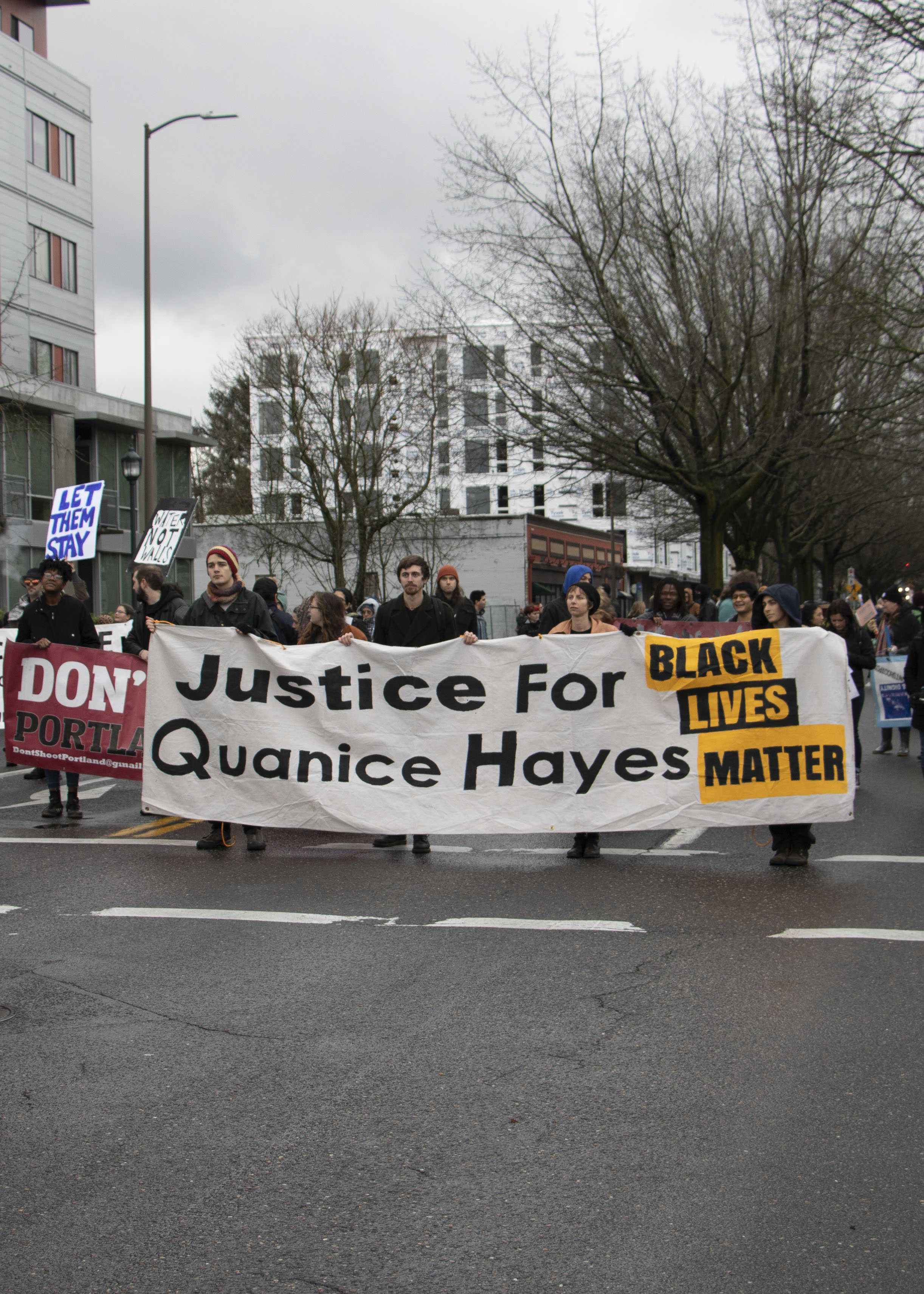Building bridges
It is Friday, May 13, MESA Day at Portland State, and groups of middle and high school students chatter on the steps outside the Stott Center, some holding posters, others clutching balsa bridges or odd-looking model vehicles.
MESA – Math, Engineering and Science Achievement – is a program encouraging underrepresented students to pursue college math, science, engineering and computer science.
“We get students excited about science and engineering,” says Carla Faini, Ph.D., director of Oregon MESA. “MESA students meet weekly at their schools with an advisor. College students and professors help out, too.”
“And we have the big events, like MESA Day,” she continues. “Science fairs, field trips to colleges, industry site visits, and SAT prep classes.”
Created 35 years ago in California, there are now MESA USA chapters in 11 states, as well as a waiting list of states that want a program. Chapters are anchored at a four-year college or university. In Oregon, MESA’s home is the Maseeh College of Engineering and Computer Science.
“The kids are amazing,” says Jane Van Dam, a seventh grade science teacher and MESA coordinator at Portsmouth. “I get to come to work and have fun at the same time.”
“MESA Day is fun! We get to practice engineering,” says one Portsmouth student. “We get out of school for a whole day!” adds another.
Inside the Center, a gym is cordoned off for MESA challenges. Maps point the way to “Bridge Testing” and “Trebuchet” areas. A sign reads, “Sail Car Judging.”
“The sail cars are our on-site design competition,” says David Coronado, program coordinator for Oregon MESA. Each team gets a bag of identical items and has 50 minutes to build a powered vehicle.
“There’s a small engine in the bag, but no wires,” he explains. “There’s foil, though. They have to figure out that the foil can be used with the battery to power the car.”
In another event, students build cars powered by a mousetrap. The cars are tested for velocity and for their ability to climb a 30-degree ramp.
The front doors open, and students begin spilling into the Stott Center. Once registered and outfitted in blue MESA T-shirts, they’re ushered onto the bleachers, creating a gorgeous sea of faces.
Trinidad Alvarez, a senior, anchors the Jefferson High School team. “I’m here for the bridge competition,” he says. “I won the last two years, and I’m going for three.”
He displays a balsa model about a foot long. “There are size and structure limits,” he explains, “and rules about design.”
Alvarez is clearly a legend among the MESA group, and many students steal a look at his bridge. A blue-shirted adviser points at it and shouts over the crowd to a student, “You should take a look at this! Get ideas for next year!”
Alvarez has received early admission to Oregon State University’s engineering school for Fall 2005.
Stephanie Hughson, a Jefferson junior, is here for the math. “They give us different math problems,” she says. “We solve them as a team. I love the challenge.”
“It’s a great program,” their advisor, Daniel Motta, says. “I watch the kids building something, testing it, trying it, trying it again.” He smiles. “They learn a lot that they’ll end up using in life.”
The third Jefferson team member is Jay Ferguson, a sophomore.
“Jay’s our idea man,” Motta says. “He can look at things and tell when something’s wrong.”
Undoubtedly a critical skill for a future engineer or scientist.
At 9:45 a.m., Carla Faini steps up to the podium, says good morning and introduces Daniel Bernstine, President of Portland State University.
“College is life-changing, Bernstine says. “It goes a long way toward creating your future.”
Bernstine is followed by Marcia Fischer, assistant dean of the Maseeh College of Engineering and Computer Science.
Fischer announced a new scholarship at the event. Any Portland-area student who participates in MESA through high school and then comes to PSU and enrolls in an engineering or computer science major will receive an award of $1000 per year.
“We hope this incentive helps you stay on this path through high school,” Fischer says.
The MESA “Nationals” are in Irvine, Calif., this year. Today’s two winning teams will earn an all-expense-paid trip to the event, with a side-trip to Disneyland.
In Science Building I, site of the bridge competition, students mill around, clutching bridges and filling out paperwork. Alvarez and his team are already there.
Three small boys point toward Alvarez. “That’s him,” one boy says. “He’s won two years.” They gaze at Alvarez and his bridge with thinly disguised awe.
Asked whether the students are open about their design details or keep everything secret, Motta replies, “Today they’ll be forthcoming, because it’s too late to make any changes. Up until now it’s been very secretive.”
Alvarez is all business, all concentration, watching as the test device is set up and calibrated.
Each bridge is tested alone in a pneumatic MTS (Material Test System). One student calls it “The Bridge-Squisher.”
The MTS applies pressure to each bridge in pounds per square inch, increasing until the bridge collapses. A monitor shows graphic and digital readouts.
The first contestant steps up, holding a delicate-looking bridge with a long arch. The bridge manages 21 pounds per square inch before a sharp crack is heard and the structure crumbles. It’s only balsa, after all.
Alvarez is second. He approaches the MTS and hands over his bridge.
“Confidence is high,” says Ferguson, clapping Alvarez on one shoulder.
Silence falls over the room as the pressure mounts. Ten pounds, 20, 50, 110, 180, 200 … .
The bridge takes 225 pounds per square inch before giving way. Alvarez pumps his fist into the air. “Yes!”
The next future engineer approaches the MTS, bridge in hand.




